
Buying Your First Mic: The 4 Step Guide
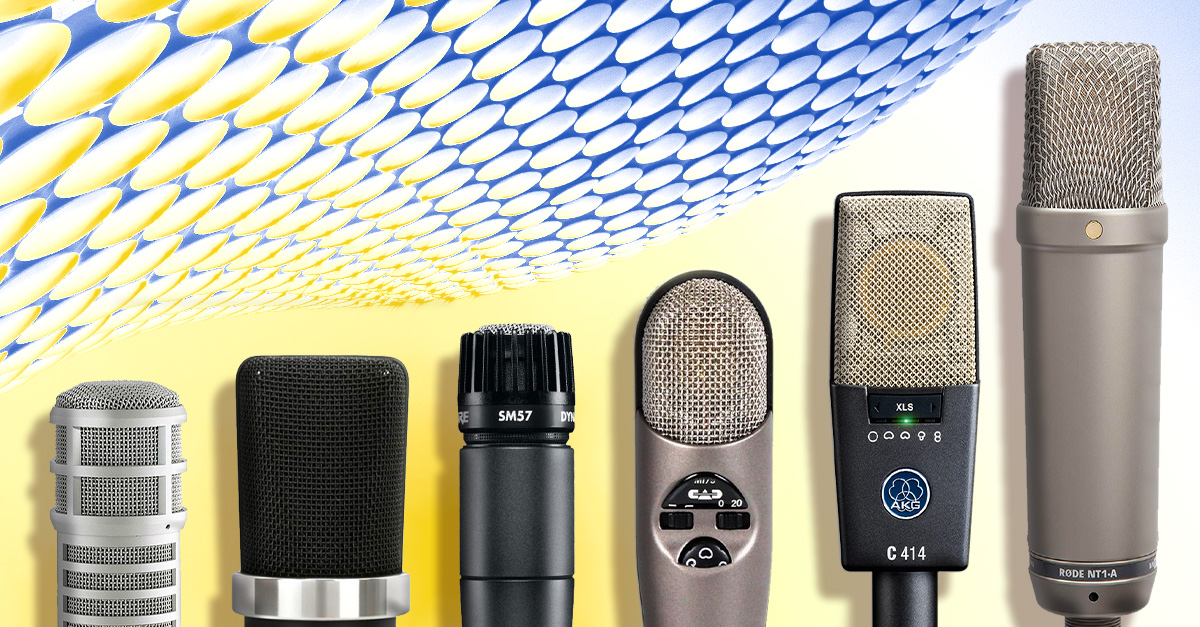
So you finally put together the basics of your home recording studio. You have your audio interface, your monitors or headphones and your DAW.
Unless you’re making your music exclusively with sample packs or VST synths, you’ll need one more thing to get sounds into your DAW: a microphone.
Buying your first microphone is a big moment. It’s your first step into the world of capturing sound. But there’s a huge range of microphones out there, and a lot to know about mic’ing.
What are the best microphones? What are the main microphone types? How do you choose the right mic to get started with?
Ask yourself these four important questions and you’ll be able to narrow your choices down a lot and find the right mic for your sound–and most importantly, avoid buying something you don’t need…
So to help you find the mic you’ll like, here’s everything you need to make the right mic selection.
1. Decide on your budget
Your microphone budget is a big factor when it comes to buying your first mic.
Figure out your budget before you get too far into shopping. That way you’ll get the most for your money.
In this guide I’ll offer suggestions for beginner, intermediate and pro budgets. Now that you’ve figured out your budget, let’s get started!
2. Figure out what you’ll be recording most often
Decide what you want to record. You need to take advantage of the strengths of the first mic you add to your collection and make sure it fits all your needs.
You need to take advantage of the strengths of the first mic you add to your collection.
So think about what you’re planning to record the most. The good news is that there are some common microphone choices for certain studio tasks.
Here’s some go-to mic choices for common recording situations:
Electric guitar
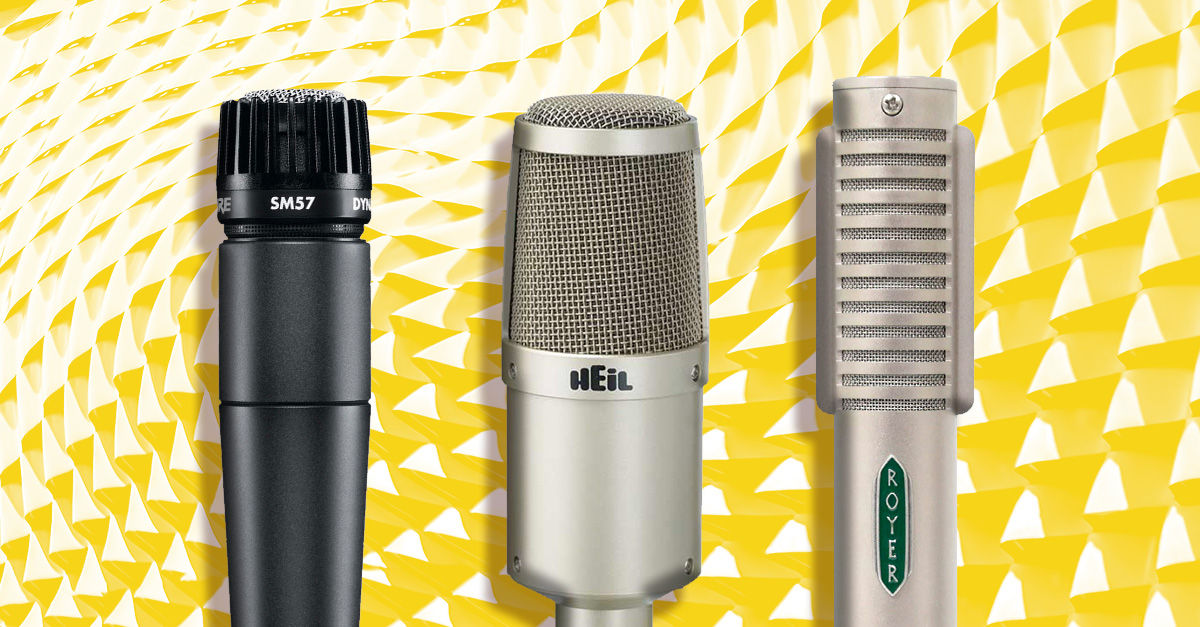
Electric guitarists are lucky when it comes to recording. One of the all time classics for mic’ing up amps is the essential Shure SM57 We’ve said a lot about this mic before, but it’s worth repeating that it’s a perfect choice for electric guitar.
While you can certainly spend a lot more money on guitar amp mics, don’t think for a second that the SM57 isn’t a pro choice—you might find it’s all you need!
- Beginner Budget: Shure SM57
- Intermediate Budget: Heil PR30
- Pro Budget: Royer R-121
Acoustic instruments
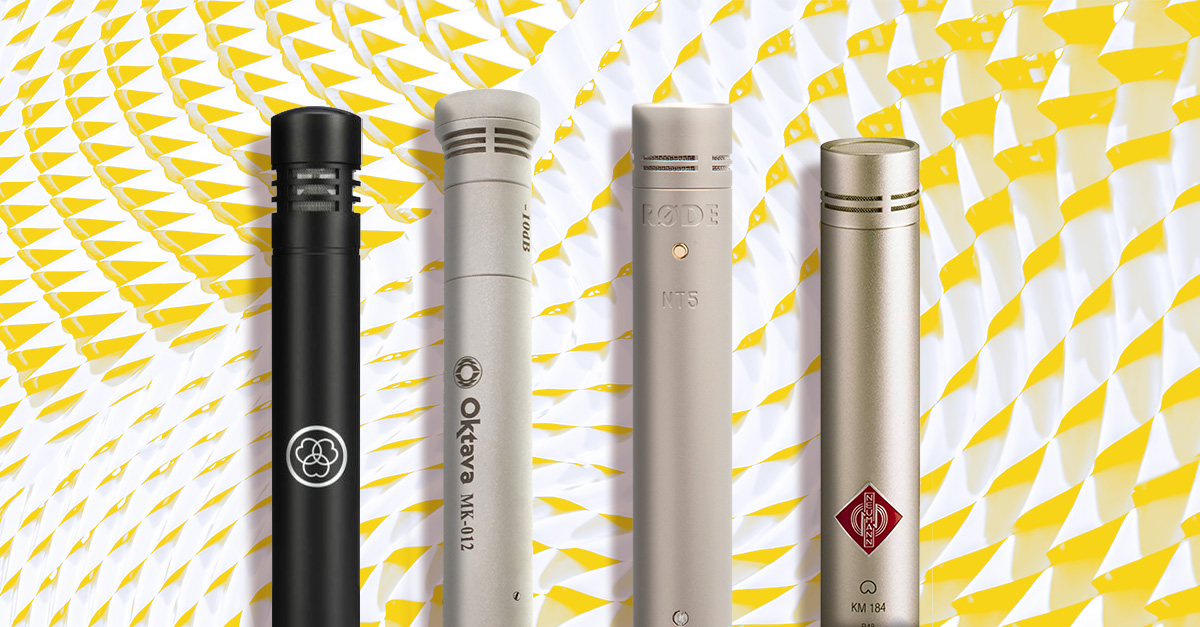
If you’re looking to make realistic recordings of acoustic instruments or a live band playing, small diaphragm condenser microphones might be the right choice.
It’s bending the rules a tiny bit, but small diaphragm condensers are often sold in matched pairs specifically meant for stereo recording.
A pair of small diaphragm condensers is perfect for capturing a realistic sense of a space and intimate acoustic performances.
- Beginner Budget: AKG P170
- Intermediate Budget: Oktava MK-012 or Rode NT-5
- Pro Budget: Neumann KM184
…Everything?
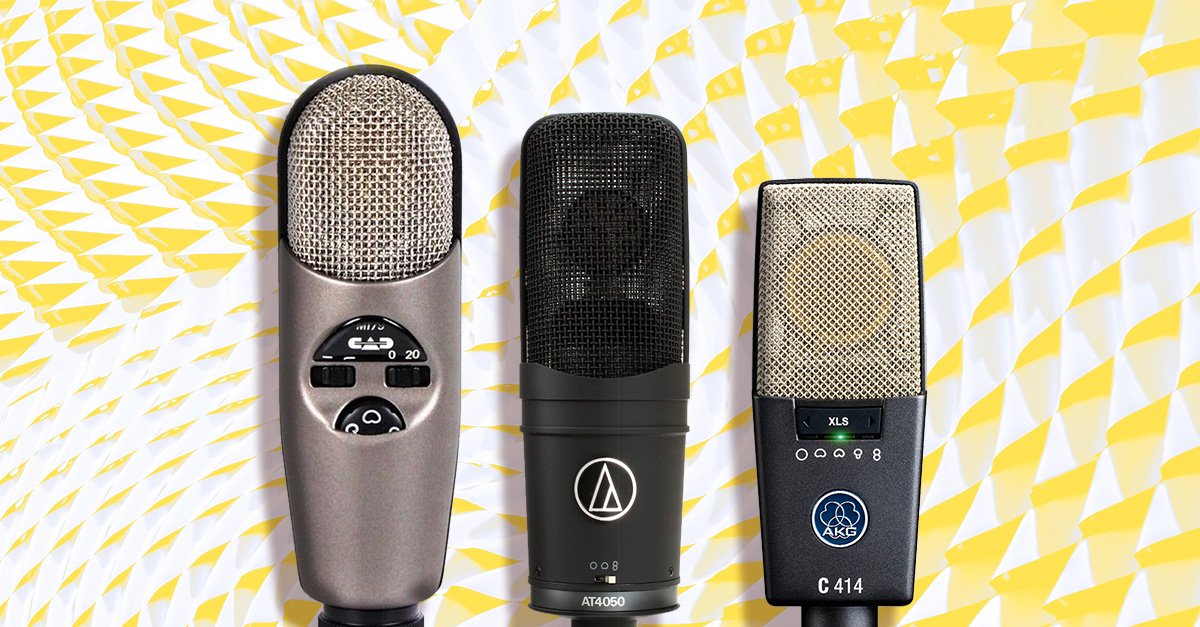
If you have to choose one mic to cover multiple duties there are a few microphones known for their ability to handle multiple sources effectively.
There are a few microphones known for their ability to handle multiple sources effectively.
They’re mainly large diaphragm condensers with selectable polar patterns. Having access to different polar patterns makes a mic much more adaptable to different recording situations.
- Beginner Budget: CAD m179
- Intermediate Budget: Audio Technica AT4050
- Pro Budget: AKG C414
Of course, a huge number of musicians are mainly looking to record vocals. That’s where things get a bit trickier…
3. Match your mic to your singing style
It may seem obvious, but not all mics work well for metal screamers as they do for jazz singers. Different styles of singing sometimes require different types of microphone.
Unfortunately, there’s no way to recommend the perfect mic for a specific singer without some experimentation.
Unfortunately, there’s no way to recommend the perfect mic for a specific singer without some experimentation.
You’ll just have to try some out! Our list of the best microphones is a good place to find some options.
To give you some ideas, here are some microphone characteristics associated with common vocal styles:
- Breathy female vocal: A mic with smooth top end that doesn’t get sibilant
- Baritone male vocal: A mic that can capture warm low mids clearly
- Screaming or aggressive vocal styles: A mic that can handle the high SPL and intense transients of a screamed performance
- Rapping: A mic that’s not too sensitive to loud plosives from spoken syllables
Check out our guide to the different microphone types if you want to know the general sonic characteristics of different microphones and what they do best.
4. Think about your recording environment
Any seasoned engineer will tell you that the environment where you record is just as important as your gear—if not more!
Any seasoned engineer will tell you that the environment where you record is just as important as your gear—if not more!
Where you plan to record makes a big impact on what kind of mic you should choose.
Here are a few of the types of recording environments that may affect your mic choice.
Untreated room
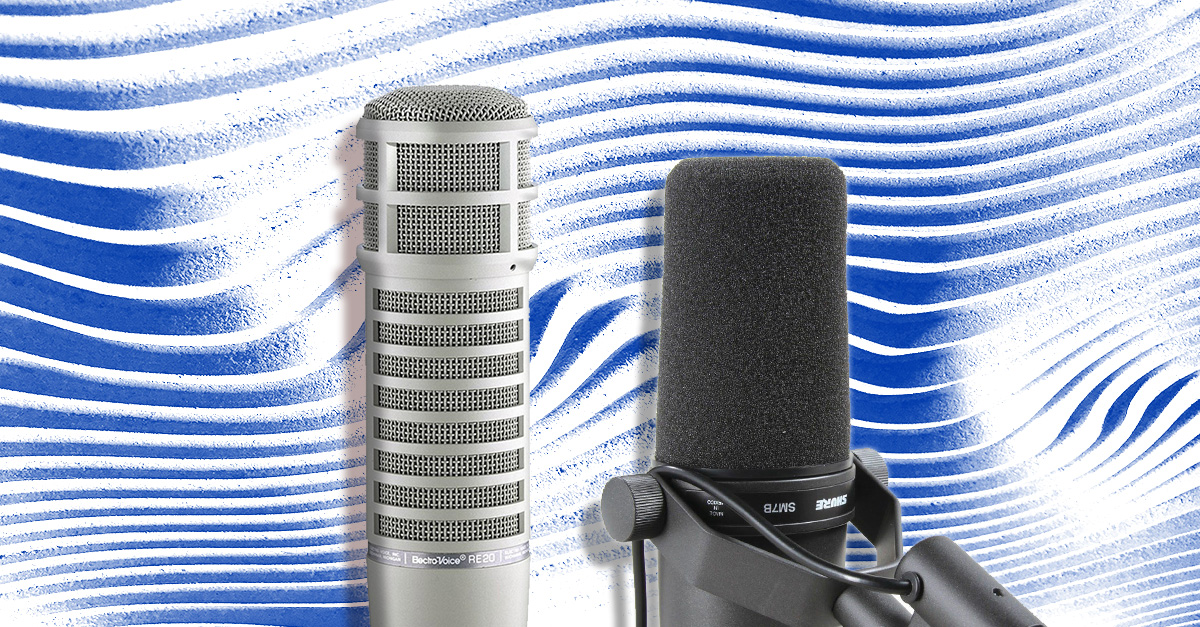
If you’re working in a less than ideal environment, choosing a mic that minimizes the effects of a bad sounding room can help you out a lot—especially if you’re tracking vocals.
The best choices to downplay the effect of bad rooms are dynamic mics. And you can still get great results on vocals with mics like the Shure SM7B or Electrovoice RE20.
DIY vocal booth
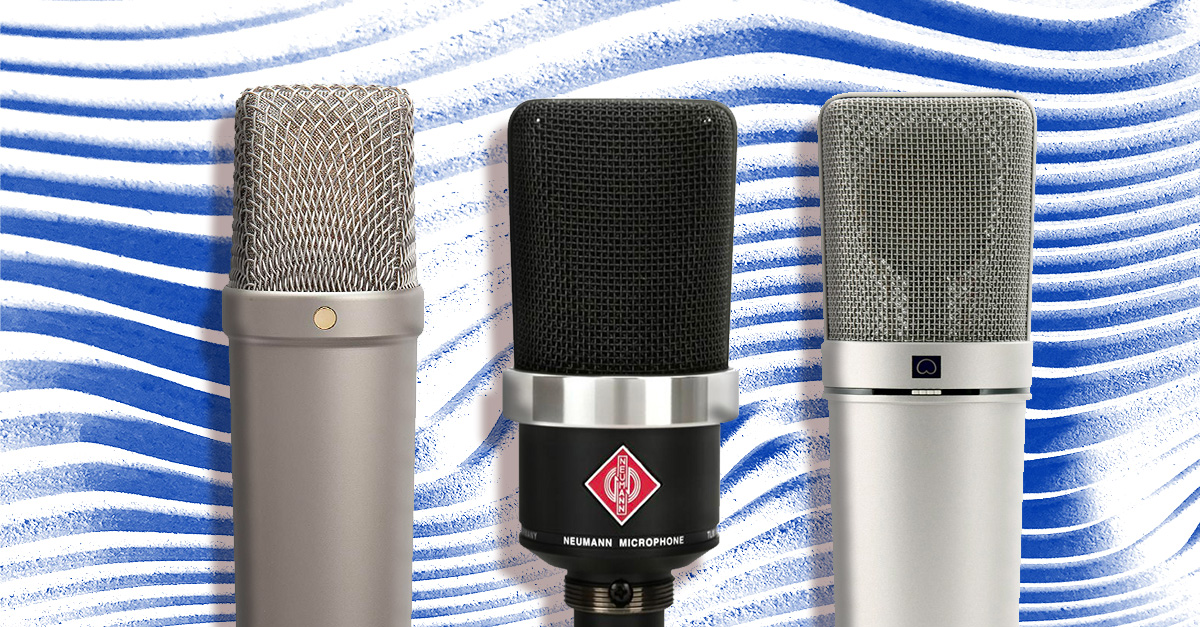
You’ve got slightly more leeway in a DIY vocal booth—even if it’s just a closet with towels on the walls.
Here you can get all the detail of a condenser mic without having to worry too much about reflections from the room.
That means you can check out the classic choices for vocal large diaphragm condensers.
- Beginner Budget: Rode NT1A
- Intermediate Budget: Neumann TLM 102
- Pro Budget: Neumann U87ai
Nice Sounding Acoustic Space
Not all spaces needed to be treated to sound good.
If you happen to have a room that naturally sounds good, you’ll be able to take advantage of it and do some distance micing!
Break out a pair of small diaphragm condensers or a nice ribbon if you’re recording live instruments like drums or acoustic guitar.
First Mic Aid
Buying your first mic should be an exciting occasion—not something to stress over.
If you take the time to ask yourself the questions in these four steps, you’ll know how to take your first step into recording with microphones.
So now that you have some choices, go out there and get excited about making your first mic purchase—it probably won’t be your last!
Gear guides, tips, tutorials, inspiration and more—delivered weekly.
Keep up with the LANDR Blog.



